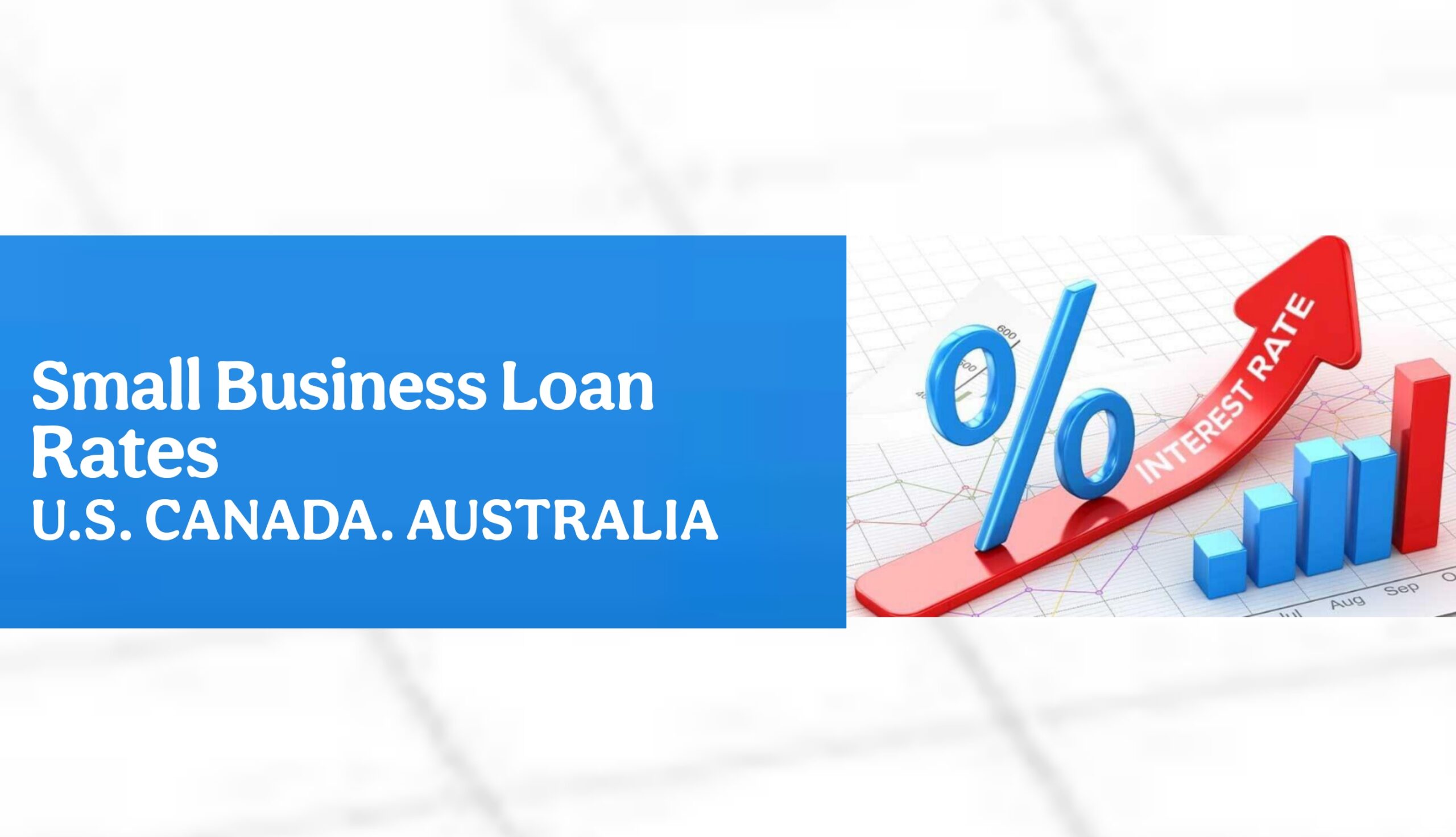Small business loan rates vary significantly more by loan type than by location. In 2025, U.S. bank term loans typically land between 6.6% and 11.5% APR, while SBA loans hover around 10.5%–15.5%. Online lenders span a much wider range: 14%–99%. Let’s dive into how these figures differ across the U.S. states and internationally.
U.S. National Loan Rates Summary
| Loan Type | APR Range |
|---|---|
| Bank Term Loan (qualified) | 6.6% – 11.5% |
| SBA Loans (7(a), etc.) | 10.5% – 15.5% |
| Online Term Loan | 14%–99% |
| Merchant Cash Advance | 40%–350% |
State-by-State Snapshot: Bank Loan APRs
These ranges reflect regional market differences, backed by data from the Federal Reserve SBCS survey and national APR benchmarks:
| State | Estimated APR Range |
|---|---|
| California | 6.0% – 10.5% |
| Texas | 6.2% – 11.0% |
| Florida | 6.5% – 11.5% |
| New York | 5.8% – 10.0% |
| Illinois | 6.0% – 11.2% |
| Ohio | 6.3% – 11.0% |
| Pennsylvania | 6.1% – 10.8% |
| Georgia | 6.6% – 11.5% |
| Michigan | 6.4% – 11.3% |
| Washington | 6.2% – 11.0% |
Note: Ranges are estimated using regional credit survey data and national APR trends.
International Snapshot
Canada: Typical small business loan APRs range from 5% to 12%, including government programs like the Canada Small Business Financing Program.
UK: Standard bank or government-backed loan APRs range between 6% and 15%, with startup loans specifically at 6% fixed.
Australia: General APR ranges for small business loans fall between 10% and 25%, although secured rates may be lower, often near 6–12%, depending on bank offers and economic conditions.
Why Rates Differ by Region
Lender Competition: Dense markets (e.g., NY, CA) often show slightly lower rates due to competition.
Economic Volatility: Higher regional risk leads to higher lender margins (e.g., Florida, Georgia).
Government Programs: Provincial, national, or state-backed facilities (like SBA and CSBFP) offset rate premiums.
Data Context: The April 2025 Bank of England base rate reduction to 4% offers borrowing relief in the UK, influencing lower rates overall.
Australia Outlook: The recent RBA cash rate cut to 3.6% signals potential business loan rate decreases.
Case Study: Loan Type Cost Impact
A $200,000, 5-year loan in California:
Bank Loan (7.5% avg) → ~$4,108/month
Online Loan (20%) → ~$5,293/month (~25% more in cost)
SBA Loan (5%) → substantially lower monthly cost, if approved
Top 5 Tips to Get the Best Loan Rates in Your State
Know your state APR norms—benchmark before negotiating.
Use local lenders—community banks sometimes undercut national rates.
Apply through subsidized programs—e.g., SBA in the U.S. and CSBFP in Canada.
Strong financials help everywhere—solid credit and annual revenue mitigate regional premiums.
Time your application when central banks trend lower—e.g., BoE or RBA easing cycles.
FAQ
Do SBA loan rates vary by state?
No—SBA rates are set federally; any state variance reflects local lender markup, not federal price.Which country offers the lowest small business loan rates?
As of mid-2025, Canada and the UK see some programs offering 5–6% APR (subsidized or government-backed), while U.S. bank loans average around 6–11%.Are online loans more expensive than bank loans everywhere?
Yes—generally, online/marketplace loans come with significantly higher APRs (14–99%) due to risk pricing.
Methodology & Sources
U.S. national APRs: Estimated using the Federal Reserve SBCS survey and reporting from NerdWallet and Lendio. lendio.com
SBA rates: Verified by NerdWallet and SBA 7(a) rate data.
International data:
Canada: Bank of Canada statistics + CSBFP documentation.
UK: British Business Bank (start-up loan) and typical APR sources (Iwoca).
Australia: RBA and Westpac published rates.
Central bank context: UK base rate drop and Australian cash rate cut.
Related Reading:
Final Takeaway
Loan costs for small businesses are driven far more by loan type and business financials than by location. Still, knowing your regional rate norms helps you negotiate effectively. Keep this page bookmarked—it’s updated regularly with February 2025 APR data and trends.

